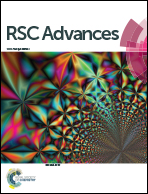The effect of thermal annealing on the optical and electrical properties of ZnO epitaxial films grown on n-GaAs (001)
Abstract
Wurtzite ZnO epitaxial layers grown on n-type GaAs (001) by pulsed laser deposition (PLD) exhibited n-type conductivity. Post-growth annealing leads the conversion of carrier type from electron to hole, as revealed by Hall effect measurements, although only moderate structural improvement was observed. The carrier type conversion is attributed to thermally activated arsenic diffusion from the substrate, confirmed by secondary ion mass spectrometry and photoluminescence. The surface electrical properties of both the as-deposited n-type and annealed p-type ZnO epitaxial layers were thoroughly characterized by Kelvin force microscopy (KFM) and electrostatic force microscopy (EFM). The results indicated the existence of a high density of surface states close to the ZnO midgap with a density of a few 1014 cm−2 eV−1. The Fermi levels (EF) of n- and p-type ZnO epitaxial layers were found to be 1.06 eV below the conduction-band minimum (CBM) and 1.612–1.769 eV above the valence-band maximum (VBM), respectively. The small EF difference between the n- and p-type ZnO epitaxial layers implies Fermi level pinning at the surface of both n- and p-type ZnO epitaxial layers.


 Please wait while we load your content...
Please wait while we load your content...